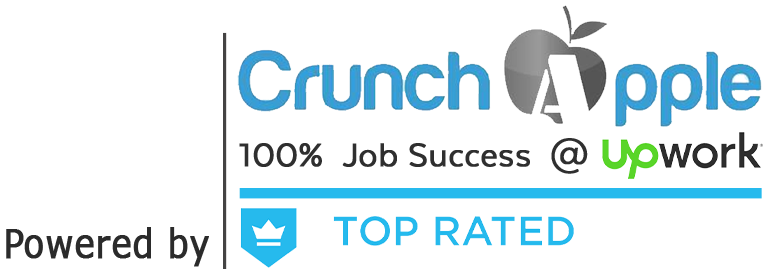Oracle HCM Techno Functional Interview Questions.
(Interview Questions for Oracle HR Payroll Job)
Following are the sample interview questions which you can expect during interview for HR/Payroll Techno Functional Job.
Q. What are the minimum classifications to create a Business Group?
1. Business Group
2. GRE/legal Entity
3. HR Organization
Q. What are the pre-requisites for creating a Business group?
1. Value sets
2. Key flex fields
3. Location
Q. What is the use of HR organization?
If we want to assign the employee information to a Business Group then we need to have HR organization classification under a business group.
Q. What is people group?
1. It is a flexible area for holding user defined assignment data
2. Data can be used for grouping sets of assignment together
3. People group can be used for element eligibility
4. This information is used by the payroll run
5. The data will be held in PAY_PEOPLE_GROUPS.
6. Group_name field holds the concatenation of segment data.
Q. What is kff structure for SIT? What is the title of KFF for SIT.
Personal Analysis Flexfield.
Q. What are the DFF structure for EIT? How many type of EIT and their titles.
1. Extra person information
2. Assignment extra information
3. Extra location information
4. Extra position information
5. Extra job informantion
6. Organization developer DF
Q. How to enable EIT?
1. Switch responsibility to human resources, vision enterprises
2. Double click on security
3. Click on information types
4. Create your own information types under your responsibility name
Q. How to enable SIT?
1. Switch responsibility to human resources vision enterprises
2. Double click other definitions
3. Click on special information types
Q. What is the Data Track?
1. It is used to maintain record history by creating a new record when the date track mode is UPDATE and override on the existing record when the Data track mode is CORRECTION.
2. The value of the Data track record depends on the date
3. Tables ending with _F are date track tables
4. To control data tracked rows, every Date Track table must include Effective start date and Effective end date.
5. The effective start date indicates when the record inserted
6. The effective end date indicates when the record updated or deleted.
Q. What are Date Track Tables?
Every update in the Table, we will save the change in the form of a Record to provide the facility to find the information at any point of time.
These tables are post fixed by _F
Q1) What is the difference between a Job and a Position?
Job is general one, whereas Position is specific term to department or Organization.
JOB: Clerk , Secretary , Developer
POSITION: HR Clerk, HR Secretary, Finance Secretary, IT Developer
Q2) What is the difference between extra information type (EIT) and special information type (SIT)?
EIT and SIT Both are provided by Oracle to Capture Extra Information. Basic differences would be EIT is similar like a DFF and also defined using DFF Definition Screen. SIT is KFF and defined using Personal Analysis KFF Definition screen.
SIT generally used at Person Level, EIT can be defined at PERSON, ASSIGNMENT, CONTACT, ELEMENT, LOCATION and JOB LEVEL.
There are 2 columns date_to and date_from in SIT while no such columns are there in EIT.
Q3) Tell me the name of important Key Flex-Fields (KFFs) in Oracle HRMS?
• Job KFF,
• Grade KFF,
• People Group KFF,
• Position KFF,
• Cost Allocation KFF,
• Comptence KFF
Q4) List of some Important Tables in HRMS
Per_all_people_F,
per_person_types,
per_person_type_usages,
per_addresses,
Per_all_assignments_f,
per_jobs,
per_job_Definitions,
per_grades,
per_grade_definitions,
hr_all_positions,
hr_all_position_definitions,
hr_all_locations,
pay_all_payrolls_F,
pay_element_entries_F,
pay_elements_links_F,
Q5) What is the difference between both SECURED VIEWS and NON SECURED VIEWS?
1.Secured views display information only for the current period
2.Unsecured views is used to get the information from the entire rows
Q6) what are APIs and use in Oracle HRMS?
API’s are used in HR to insert the data into the Base tables. As it’s very secured system, the user does not have the facility to copy the data directly into the Base tables. When we write the inbound interfaces / use WebAdI, the systems will use the APIs to store the data into system. The API are published by oracle with number of parameters. The different types of parameters are IN / INOUT / OUT of these parameters few are mandatory, without which the process won’t complete. Generally when we use API we give data FOR : Object Version Number, Effective Date, P_Validate
HR_EMOYEE_api example: hr_employee_api.create_employee
hr_organization_api Example: hr_organization_api.create_organization
hr_assignment_api
Q7) What are processing types of element?
Elements are nothing but the components of the salary.
For Example: Basic Salary, House Allowance, Transport Earning, Bonus, Loan Recovery etc.
There are 2 types of Processing
1. Recurring: if an entry of this element applies in every period until the entry is ended
2. Non Recurring: if an entry applies in one pay period only.
Q8) What are termination roles of an element?
Termination Rules of an Element:
a).Actual Termination: For a nonrecurring element, select Actual Termination if you want the entries to close down at the end of the pay period in which the employee leaves.
b).Final Close: if you want the entries to stay open beyond the employee’s leaving date so that you can continue to pay the employee.
c).The Last Standard Process date defaults to the last day of the pay period in which the employee is terminated, but you can set it to a later period when you terminate an employee.
Q9) What is costing?
Costing: Recording the costs of an assignment for accounting or reporting purposes, Using Oracle Payroll, you can calculate and transfer costing information to your general ledger and into systems for project management or labor distribution.
Q10) What are 2 modes of date track in Oracle APPS?
There are two Date Track modes are as follow:
*Update
*Correction
Q12) Can you call PL/SQL Package functions from within a Fast Formula?
Yes you can. There is a Define Function screen in HR. In this screen you will register the PL/SQL as “External Function”.
Q13) IF we want to pass a parameter PAYROLL_ID to this external PL/SQL Function, how do we do it?
The “Define Function” screen has a button named “Context Usage”. This button opens up a window in which you can register the parameters.
Q14) How do you debug a Fast Formula?
You can create a message variable in Fast Formula.
This message variable must also be registered as a Formula Result ( In “Formula Result Rule” window).
Q15) What are the various levels where you can Set up Payroll Costing Accounts? Which levels take the highest precedence?
Element Entry => Highest
Assignment => Second Highest
Organization => Third Highest
Element Link => Fourth Highest
Payroll => Fifth Highest
Q16) Technically speaking, how do you know from tables that an Employee has been terminated?
(a) The Person_Type_ID in PER_PERSON_TYPE_USAGES_F will correspond to System Person Type EX_EMP
(b) A record gets created in table PER_PERIODS_OF_SERVICE with Actual_Termination_date being not null
Q17) How can you make Employee Number generation Automated based on business rule etc?
Use Fast Formula.
Q18) What is the difference between per_people_f and per_all_people_f?
PER_PEOPLE_F is a secured view on top of PER_ALL_PEOPLE_F. The secure view uses an API hr_security.show_person. This API internally checks for an entry in table PER_PERSON_LIST for the logged in person’s security profile. A concurrent program named “Security List Maintainence program” will insert records in PER_PERSON_LIST.
Q19) If you do personalization at both FUNCTION level and Responsibility level, which personalization has higher precedence?
Responsibility level. Responsibility level will override FUNCTION level personalization’s.
Q20) Say you have done a lot of Personalization’s to Self Service Screens. But all these Personalization’s were done in DEVELOPMENT environment. How will you migrate these personalization’s to PRODUCTION environment?
Before 11.5.7…Use AKLOAD
This is a java program given by Oracle. This is the only way you can script it.
In DEV you will do AKLOAD DOWNLOAD ( & other parameters)
In PRD you will do AKLOAD UPLOAD ( & other parameters)
On or after 11.5.10 Use responsibility “Functional Administrator”, then click
on Personalization Tab, and then click on Import/Export.
Next select the documents to be exported.
Go to the UNIX box and tar the personalization’s into a .tar file.
On the Production environment unzip this tar file in location as entered in profile “FND: Personalization Document Root Path”.
Setting up of this profile is mandatory or else Oracle Framework wouldn’t know where to search for the files to be imported.
Q21) How to restrict iRecruitment external visitors to access only responsibilities on the external server?
Set the Server Trust Level for the server to External, Set the Trust Level of the iRecruitment external responsibilities to External too.
Q22) Is SSHR a dependency for iRecruitment?
iRecruitment has no dependence on SSHR
Q23) Does iRecruitment support “Candidate Qualifying Questionnaires” where the candidate must answer vacancy-specific questions correctly prior to submitting an application?
iRecruitment currently does not support this function, For now this can be achieved by having a set of simple questions using flexfield to get those responses and a user hook to validate them as part of the apply process.
Q24) Do we track vacancy history?
iRecruitment does not track changes to the vacancy. If changes to a field are to be traced use the Audit capability in APPs.


